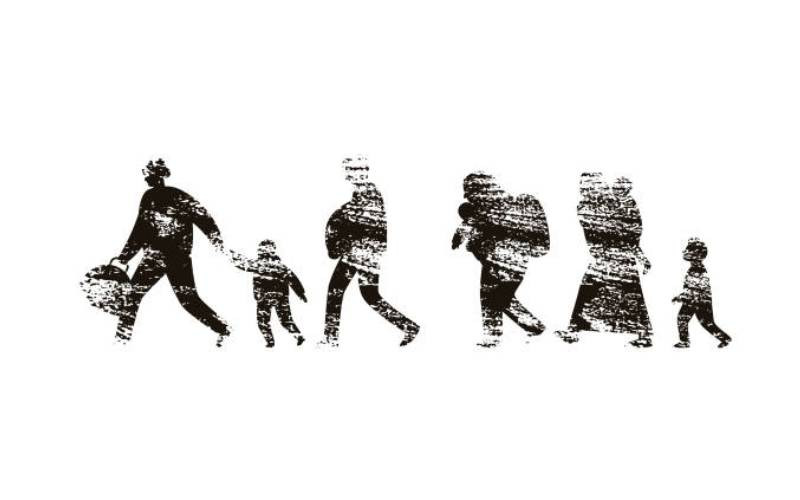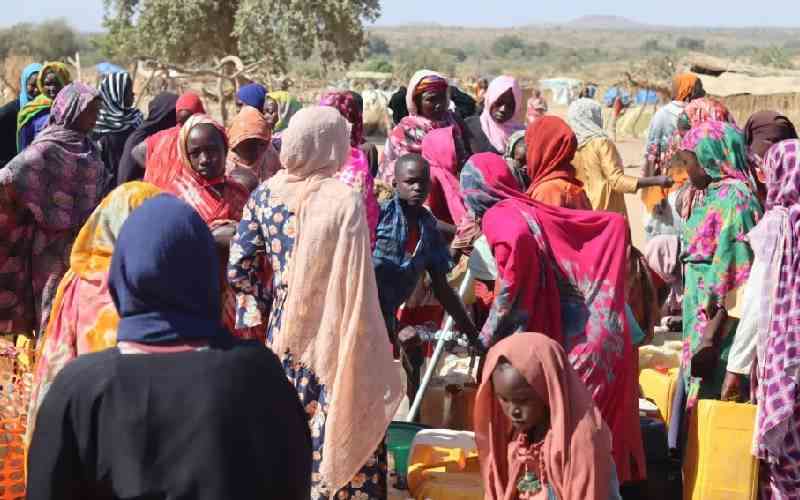A meeting held last week in Nairobi between Kenya and Somalia foreign ministers as well as representatives of the UN refugee agency (UNHCR) seems to have given a new lifeline to the Dadaab refugee camp.
At the heart of the decision is availability of funds to execute the entire repatriation process, including providing incentives to refugees to voluntarily leave the camp.
Kenya’s Foreign Affairs Principal Secretary earlier announced that sh20 billion would be required. Out of this amount, Kenya has pledged Sh1 billion.
There is little doubt that the management of Kenya’s refugee situation is a complex affair and there are no easy solutions.
For humanitarian reasons, it is difficult for any country to block distressed men, women and children fleeing extended conflict or famine. Secondly, the laws guiding the treatment of refugees are international in nature.
In the case of Kenya, international laws, which it has signed and ratified, automatically become part of domestic laws.
There are far too many institutions working around refugee issues.
The UNHCR aside, there are a host of powerful advocates with a global platform. Some of these include Amnesty International and Human Rights Watch.
Any hint of refugee mistreatment is often met with international furore that can cause any government to recoil and reconsider its decision. Owing to its reputation as an “island of peace” and its relative economic stability, Kenya was always the natural choice for people fleeing conflict and famine.
But it is the intractable conflicts in Somalia and Sudan that heralded a new chapter in Kenya’s relationship with a new segment of its population - refugees.
Kakuma Refugee Camp was set up to primarily host refugees from South Sudan while Dadaab, located just a few kilometres from the Kenya-Somalia border, was set up to receive refugees fleeing the bloody conflict following the overthrow of Dictator Siad Barre.
It received another wave of refugees fleeing biting famine in Southern Somalia in 2011.
Dadaab has been on the Kenya government’s radar following reports that terrorist sympathisers were taking advantage of the cover provided by international protection to recruit young people into terror networks.
The Government has reason to believe that the Al Shabaab terror network could have used the camp to plan terror attacks in various parts of the country.
The camp is particularly vulnerable because of its proximity to the Kenya-Somalia border and the fact that terrorists could take advantage of desperate youth promising them a better life outside the camp.
Stay informed. Subscribe to our newsletter
The UNHRC estimates that the camp now has some 326,000 refugees, down from about 400,000 in 2013. Despite the squalid conditions in the camp, it has become a haven and a comfort zone for hundreds of thousands who would rather be there than return to an unknown future in their countries of origin. Perhaps even more important and worth noting is that the camps are a critical cash cow and a gravy train of sorts for three groups of people all of whom have a platform and influence.
The first group is the bureaucrats who have converted the refugee tragedy into a thriving career. Some of these bureaucrats enjoy lives of opulence in upmarket estates in Nairobi.
It is often said in jest that they hold meetings with their colleagues who are based on the ground at the airport and then dispatch reports to their seniors in westerns capitals.
These people would not be happy to see Dadaab and Kakuma go. If anything, the closure of the two camps will end the careers of many, sending them packing from the luxurious lives in Nairobi as donor funding comes to an end.
The second group is the business people both within and without the camp. With a population of more than 300,000, Dadaab rivals many African cities as an attractive market for any investor.
Think about those aircraft which make daily trips in and out of Dadaab, the global money transfer companies that transact millions daily, the local store owner who does brisk business selling basic commodities and the hundreds of entrepreneurs that supply aid agencies with various requirements. The refugee Inc. is a multi-billion-shilling industry and among its beneficiaries are influential local politicians who have tried to use their positions to delay the closure.
The final group, though informal in nature, is the terrorist sympathisers who see the camp as an easy fishing ground. Here are thousands of young people, all aspiring for a better life.
Some are angry and frustrated by their rather difficult situation. Recruiting them with the promise of goodies for themselves and their families requires no magic.
The Tripartite meeting in Nairobi observed that the number of refugees could reduce by some 150,000 by the end of the year owing to voluntary departures, relocation of non-Somali refugees, the deregistration of Kenyan citizens who registered as refugees and new verification to confirm the actual numbers.
What is obvious is that the status quo cannot remain in place forever.
There is a unity government in South Sudan and parts of Somalia are stable. One option under international law that is available to Kenya is to encourage the refugees to voluntarily return to their countries of origin. Only about 16,000 have been formally repatriated under this arrangement since 2013 although UNHCR argues another 100,000 could have left for Somalia on their own. We clearly haven’t heard the last of the refugee story.
 The Standard Group Plc is a
multi-media organization with investments in media platforms spanning newspaper
print operations, television, radio broadcasting, digital and online services. The
Standard Group is recognized as a leading multi-media house in Kenya with a key
influence in matters of national and international interest.
The Standard Group Plc is a
multi-media organization with investments in media platforms spanning newspaper
print operations, television, radio broadcasting, digital and online services. The
Standard Group is recognized as a leading multi-media house in Kenya with a key
influence in matters of national and international interest.
 The Standard Group Plc is a
multi-media organization with investments in media platforms spanning newspaper
print operations, television, radio broadcasting, digital and online services. The
Standard Group is recognized as a leading multi-media house in Kenya with a key
influence in matters of national and international interest.
The Standard Group Plc is a
multi-media organization with investments in media platforms spanning newspaper
print operations, television, radio broadcasting, digital and online services. The
Standard Group is recognized as a leading multi-media house in Kenya with a key
influence in matters of national and international interest.








